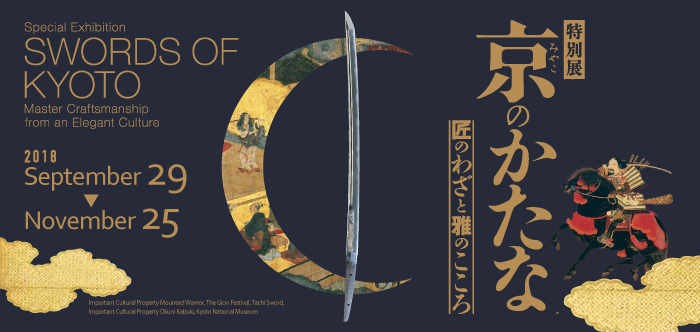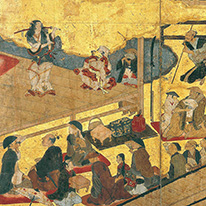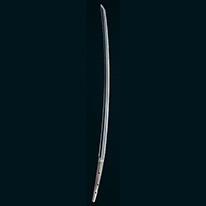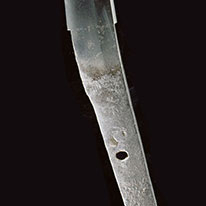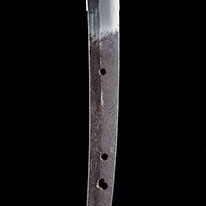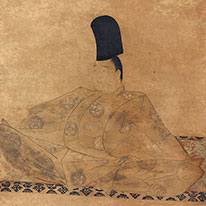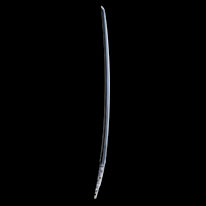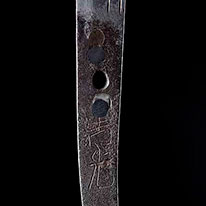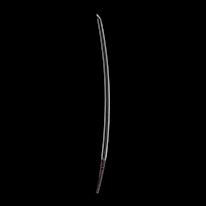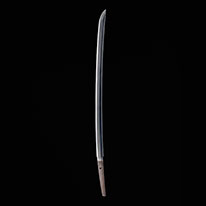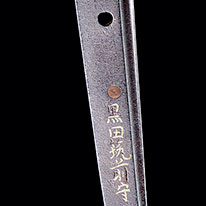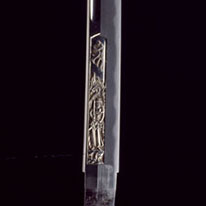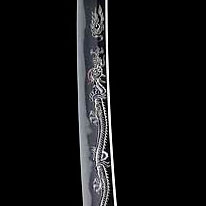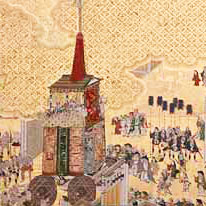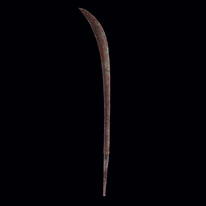General Information
| Exhibition Title | Special Exhibition Swords of Kyoto: Master Craftsmanship from an Elegant Culture |
|---|---|
| Period | September 29 - November 25, 2018 |
| Venue | Kyoto National Museum Heisei Chishinkan Wing |
| Transportation | JR, Kintetsu Railway, Keihan Railway, Hankyu Railway, City Bus |
| Closed | Mondays *Closed Mondays, but open Mon. October 8 and closed Tue. October 9. |
Special Exhibition Hours | 9:30 a.m.-6:00 p.m. (Entrance Until 5:30 p.m.) Fridays, Saturdays 9:30 a.m.-8:00 p.m. (Entrance Until 7:30 p.m.) |
| Special Exhibition Admission | Adult 1,500 yen (1,300 yen) Univ. Student 1,200 yen (1,000 yen) High School Student 700 yen (500 yen) Admission is free under middle school students. *(Fees in parentheses for groups of twenty or more) |
| Event |
Collaborative Event in the Meiji Kotokan When: September 29 –November 25 (on days that the museum is open) Entrance to the Meiji Kotokan will end 30 minutes before the museum closes each day. Where: Meiji Kotokan, Kyoto National Museum How much: Free with same-day exhibition ticket |
| Organized by | Kyoto National Museum, The Yomiuri Shimbun, NHK Kyoto, NHK PlanNet Kinki |
| In conjunction with | Kyoto City Tourism Association |
| With the support of | Iwatani Corporation, KINDEN CORPORATION, SHIMIZU CORPORATION, DAIWA HOUSE INDUSTRY CO., LTD., Nozaki Insatsu Shigyo Co., LTD., Panasonic Corporation |
| With the special cooperation of | The Society for Preservation of Japanese Art Swords |
| With the cooperation of | Nitroplus co.,ltd., Nippon Kodo Co., Ltd. |
Images from the Exhibit
From the ancient times to the present, the former imperial capital of Kyoto has been home to some of Japan's most talented swordsmiths, who have produced many famous blades. Though swords made in various regions are associated with "Yamashiro" (the former name of the province around Kyoto), those actually made in the capital have always had the highest status, prized by nobility and samurai alike. During the Edo period (1615–1868), swords were frequently exchanged among daimyo lords, and a sword from Kyoto was considered the ultimate gift.
This exhibition features seventeen National Treasure swords made by Yamashiro (Kyoto), smiths together with outstanding tachi, katana, and other blades produced by associated master swordmakers between the Heian (794 –1185) and Heisei (1989–present) periods. Also on view are a selection of important paintings, works of calligraphy, dolls, and other objects that help us understand the history of the Yamashiro smiths and their influence on Japan's sword culture. These works and the stories surrounding them help clarify the role of swords in Japan, the value they were accorded by Kyoto's aristocracy, warrior class, and townspeople, and the influence they had on Kyoto culture.
Ⅰ. The Birth of Kyoto Swords (Late Heian period, late 1100s)
When was the Japanese sword perfected? Though its origins are not definite, the forged, curved, single-edged blade with a hexagonal cross-section seems to have come about with the rise of a class of warriors (samurai) in the late Heian period (794–1185). Their battles, depicted here in handscroll paintings, would later bring about Japan's medieval age. Kyoto's great tradition of sword manufacture began around the same time with the emergence of the pioneering smith Sanjō Munechika and other swordmakers of Yamashiro—the province in which the Kyoto capital was located.
II. Emperor Go-Toba and the Goban Kaji (Early Kamakura period, early 1200s)
In the early Kamakura period (1185–1333), Emperor Go-Toba (1180–1239) succeeded the imperial throne at age three without the sacred imperial regalia. Thereafter, the imperial sword was lost in a sea battle. Perhaps as a result, Go-Toba is said to have later tried to recreate the sacred sword himself with the help of imperial smiths, called goban kaji. Go-Toba's blades—"quenched by the imperial hand"—were known kiku gosaku ("imperially produced swords with chrysanthemum"). Each was distinguished by a hairline engraving of a chrysanthemum on its tang.
III. The Awataguchi School and Yoshimitsu (Early to mid-Kamakura period, mid-1200s–1300)
In the early thirteenth century, swordsmiths settled in Kyoto's Awataguchi area (south of Okazaki on the south side of Sanjō-dōri today) became collectively known as the Awataguchi school. Most prominent among them were six brothers: Kunitomo and Kuniyasu (both goban kaji for Emperor Go-Toba), as well as Hisakuni, Kunikiyo, Arikuni, and Kunitsuna. This section introduces outstanding swords by these swordsmiths and their lineage down to Yoshimitsu. Yoshimitsu is revered as the consummate Yamashiro smith, producing blades of unparalleled dignity and workmanship.
IV. The Golden Age of Kyoto Swords (Mid- to late Kamakura period, late 1200s–early 1300s)
The Rai school of swordmakers, which formed later than the Awataguchi school, was known for its extremely high-quality workmanship. It had, in fact, a greater influence on Kyoto culture than the Awataguchi smiths as well as a broader impact across Japan, since many Rai students started up schools in other provinces. This section introduces the best known smiths of the main Rai school and masterworks produced by associated branches.
V. A Decline in Swordmaking in Kyoto (Nanbokuchō to Mid-Muromachi period, early 1300s–early 1500s)
Following a century of uprisings, the city of Kyoto suffered catastrophic damage during the Ōnin War (1467–1477), followed by even further devastation from the Tenbun-Hokke Disturbance (1536). Amidst this instability, Kyoto's swordmaking tradition went into decline, compounded by a rise in the popularity of swords from Bizen (Okayama) and Mino (Gifu) provinces. Nevertheless, Kyoto’s swordmaking legacy did not die out. This section introduces swordsmith schools who managed to break new ground even during these turbulent times.
VI. A Swordmaking Revival in Kyoto (Late Muromachi to Momoyama period, late 1500s–early 1600s)
The Ōnin war began in Kyoto but eventually spread across the nation, leading to an era of intense rivalry among provincial warlords. The most prominent of these daimyo warlords aimed to rebuild Kyoto, attracting many craftsmen to the capital. This section features the Horikawa and Mishina schools and other newly established swordsmith groups that came to Kyoto from other regions. It also introduces the master smith Umetada Myōju, regarded as the father of shintō—the “New Swords” developed during the Momoyama period (1573–1615).
VII. The Proliferation of the Yamashiro Tradition (Momoyama to early Edo period, 1600–1700)
News of the state-of-the-art workmanship being done in Kyoto by the Umetada, Horikawa, and Mishina schools reverberated throughout the sword world in the 1600s. Many aspiring swordmakers came to the capital to learn skills from its master smiths, and they took new Kyoto-developed technology back with them to their home provinces. Among these smiths were Kunisada and Kunisuke of the Horikawa school and Yoshimichi of the Mishina school, who moved to Settsu (Osaka) and perfected the style known as Osaka shintō (New Swords of Osaka).
VIII. Swords and the People of Kyoto (Mid-Edo to Heisei period, 1700–2000)
Being craftsmen, swordsmiths were part of the class of commoner townspeople in Kyoto, but what was their actual social standing within the capital? And how did blades made by these swordsmiths make their way into the possession Kyoto's of the city's many temples and shrines—which had close connections with its residents? This section addresses the interrelationships among swords, swordmakers, and the people of Kyoto. Finally, it features blades by the last smith working in the Yamashiro tradition, Living National TreasureSumitani Masamine (1921–1998).











